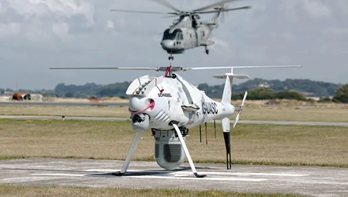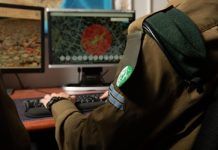The Royal Navy has secured a contract valued at approximately £20 million for the procurement of advanced unmanned aerial technology equipped with cutting-edge surveillance sensors from Thales. The technology will be integrated into the S-100 unmanned air system provided by Schiebel.
From 2024, this sophisticated and flexible unmanned air system, known as “Peregrine,” will provide real-time imagery and radar data to Royal Navy vessels on the front line. This addition to the Navy’s capabilities will enhance its ability to conduct round-the-clock surveillance of potential threats in the Gulf region, and support allied and partner forces in various missions, including anti-piracy, anti-terrorism, and anti-smuggling operations.
Peregrine’s designation as a tactical unmanned air system underscores its important role in the Navy’s operations, and the name “Peregrine” itself has strong historical ties to the Fleet Air Arm.
Rear Admiral James Parkin, the Royal Navy’s Director Develop, said: “I am delighted that we are at the stage where this excellent capability is about to be introduced into the front line. As a system both deployed onto, and integrated into, warships and auxiliaries operating in congested and complex areas of the world, the Peregrine aircraft offers what the Royal Navy needs in order to respond to the wide variety of threats that we are facing today.
Today is also a key milestone in the Fleet Air Arm’s evolution to a mixed crewed and uncrewed fighting arm of the Fleet, and we are anticipating learning many lessons as such technologies continue to develop and offer new opportunities for the current and future Navy.”
Andy Start, CEO of Defence Equipment & Support who awarded the contract, said:
“The DE&S RPAS team have delivered a contract which will see a rapid development and deployment of a key Remotely Piloted Air System for the Royal Navy. Due to the collaborative approach we have taken with industry, the Navy shall be receiving a mature air system which is able to detect threats at range, protecting British interests in the Gulf.”
The air system – which takes off from the ship’s flight deck like a helicopter would – will be the first uncrewed rotary wing aircraft to operate alongside a Wildcat helicopter, allowing for round-the-clock aerial surveillance in a timely boost to the Royal Navy’s operational capability.
The high-definition imagery and radar data from Peregrine will be fed directly into the ship’s Combat Management System, allowing the command team to have good situational awareness and make rapid operational decisions.
Peregrine will be deployed directly into an operational theatre from mid-2024, initially for two years, with the option to extend. This foundation based on operational lessons will give the Royal Navy valuable experience and understanding of the use of uncrewed systems in this role ahead of further decisions and investments through the Future Maritime Aviation Force programme.








